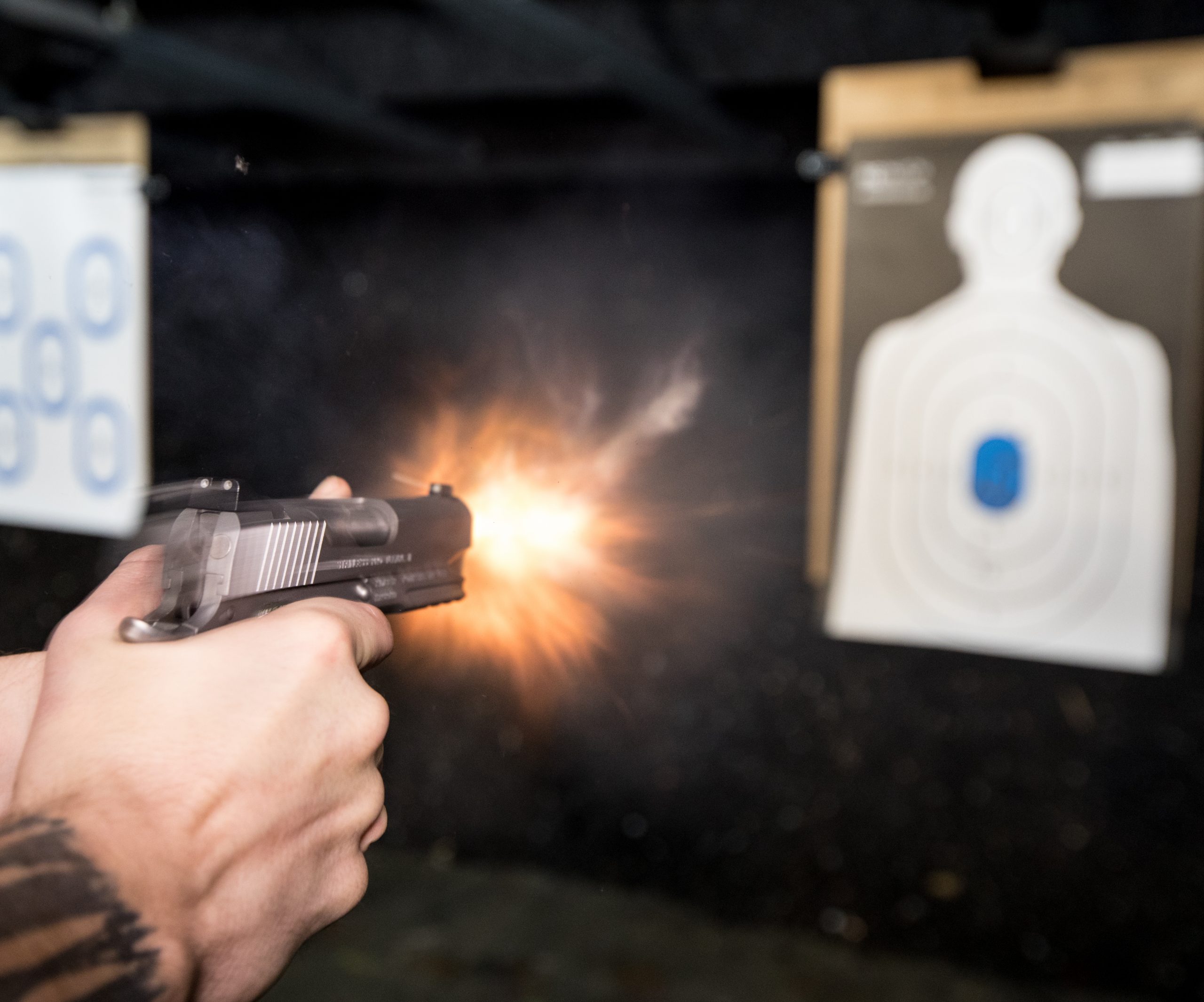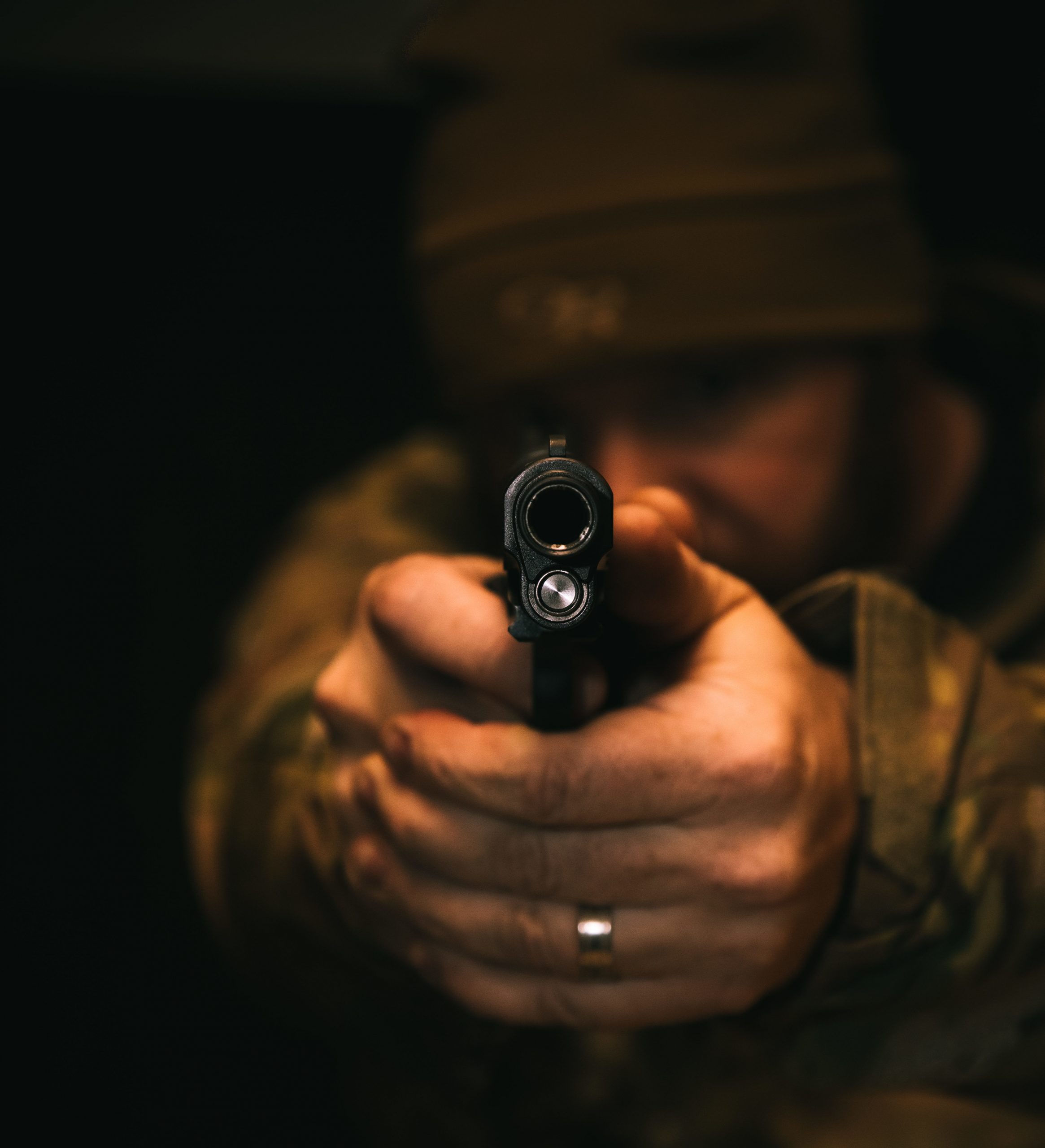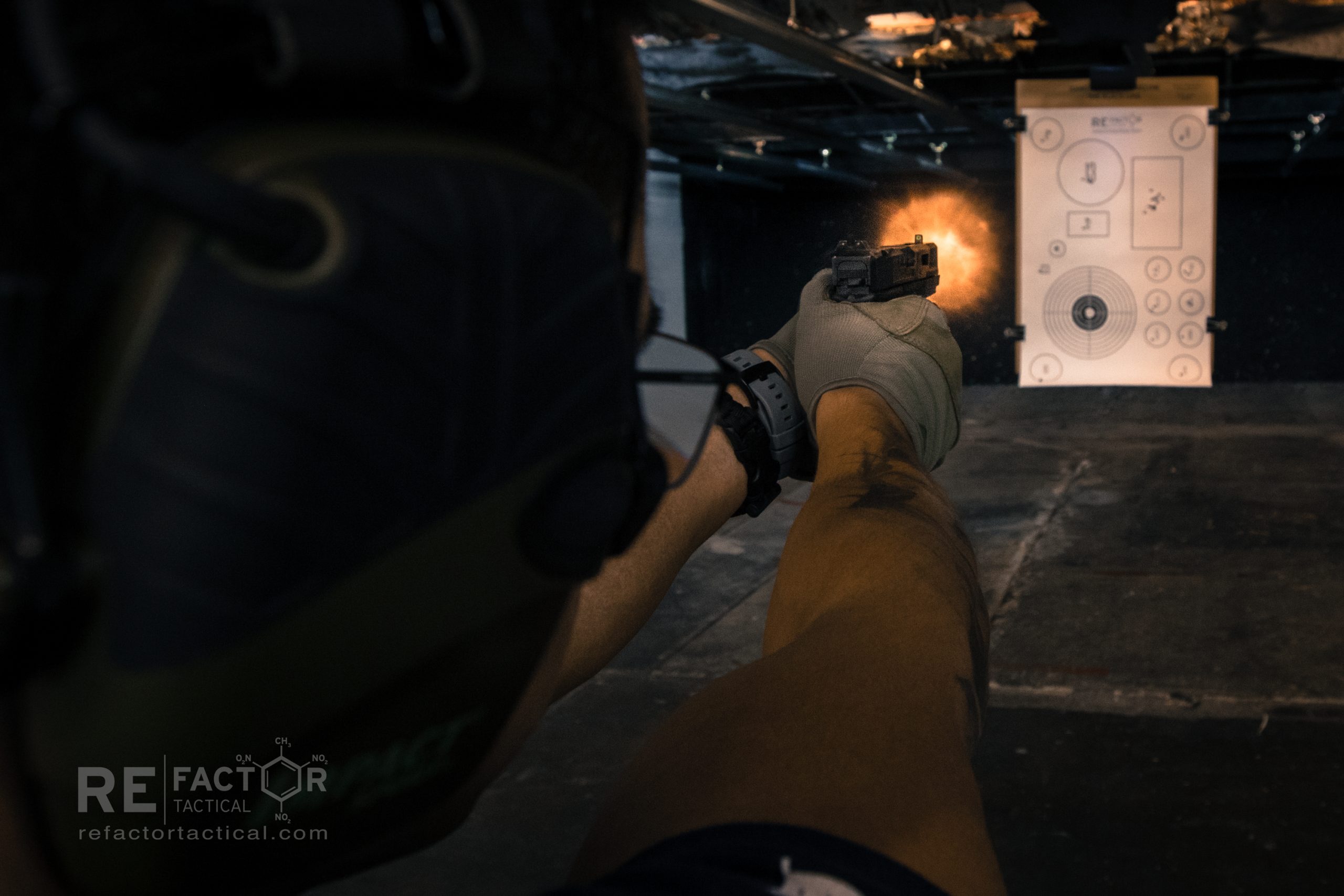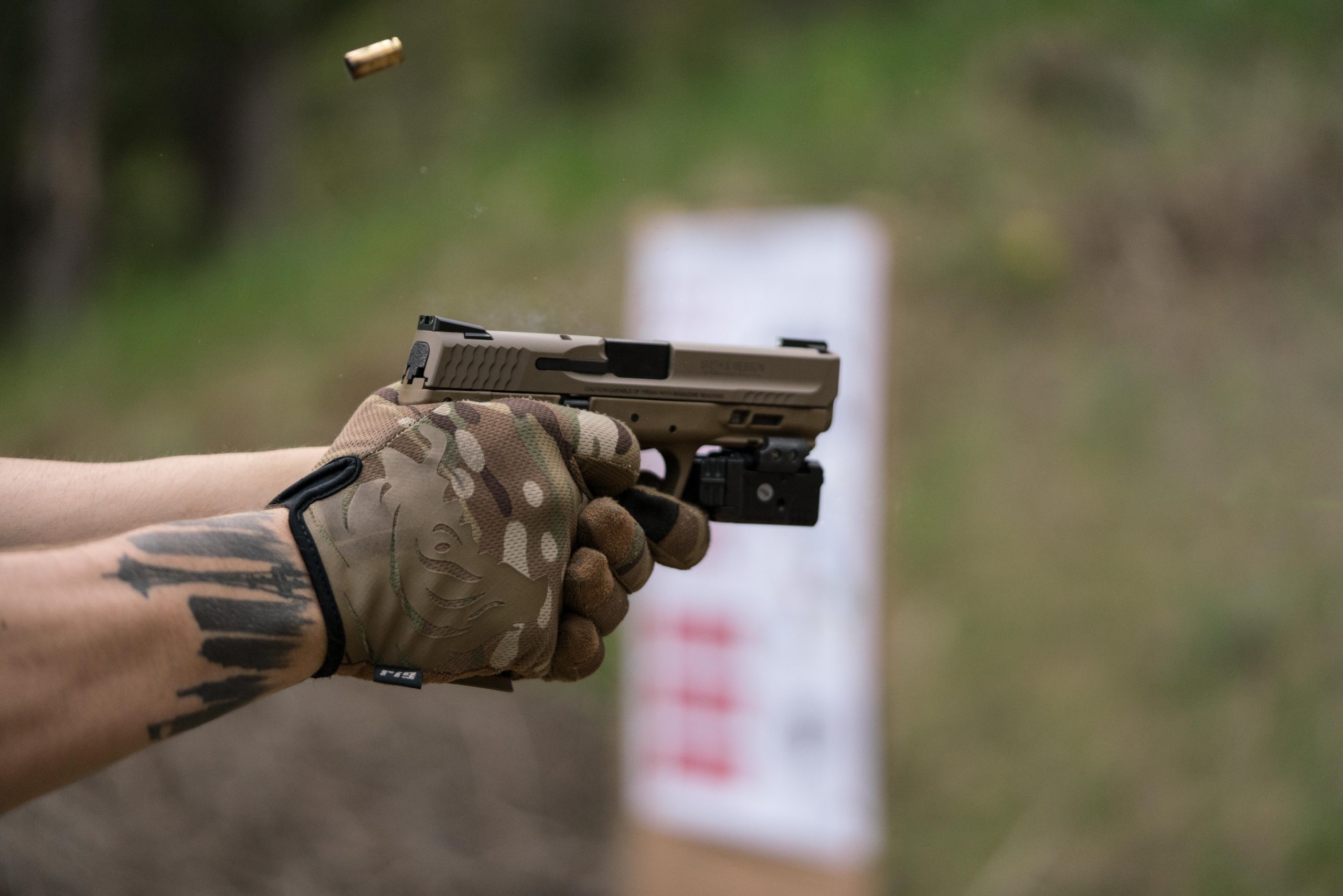More people are carrying than ever before. And that means more people are carrying concealed; the lady you walked past at the supermarket with three kids screaming, the guy pumping gas at the next pump over, the old couple sitting in the booth at McDonald’s. What we’re saying is, people of all types carry to protect themselves, their kids, spouse, and fellow citizens. Unfortunately, we can’t be sure if they are actually trained to use their concealed carry weapon (CCW), or maybe we should say, “trained enough.”
And since more people are carrying concealed, we decided to dedicate today’s blog to talk about the most practical shooting method with a CCW—point shooting, also known as threat-focused shooting.

Disclaimer: There are several different styles of shooting you need to work at to become proficient in your shooting, but today we’ll only be focusing on one that’s particularly important when it comes to your CCW, and that’s because it’s the most likely style of shooting you’ll use in a situation where you have to use your firearm quickly. This does NOT take away from the need to practice shooting correctly by using your sights. Point or threat-focused shooting is a method of up-close combat shooting.
Point Shooting
Point shooting took me a bit to figure out, mostly because no one explained how to get shots off quickly and still hit my target. I wish someone would have explained it to me sooner because I think it’s the most practical, as it’s most likely the type of shot you’re taking in a situation where you need to use your CCW.
Point shooting is when you take a shot without looking through your sights. Despite how odd that might sound to new shooters, it’s effortless and accurate.
Point Shooting Step-By-Step
First, with an unloaded weapon, you will practice by looking at your target (where you want to shoot). If you’re focusing center mass, you’ll bring your pistol up (without taking your eyes off-center mass) and then pull the trigger without looking through the sights (again, you’re still unloaded).

Now, without moving your pistol, look through your sights (don’t do this every time, this is just showing you that you naturally put your pistol on target without sighting in). They should be pointing directly at where you were focused. Do this several times to start building up muscle memory.
After you feel comfortable with the motion, you can load up. Do the same thing, but take an actual shot. The first time, shoot one round. It should be center mass as long as you kept your focus there and there were no extenuating circumstances.
Don’t Stress We Have the Gun Magazine You’re Looking For!
Once you’ve built some shooting confidence, start shooting two rounds at a time, quickly without slapping the trigger. You can add the number of shots fired as you become more and more proficient. For me, this built up a lot of confidence because I saw that I could shoot an intruder up close by simply focusing on the target area.
Fundamentals of Shooting
One thing to keep in mind, point shooting is for up-close shots.
Being within 7 meters of your target doesn’t leave much space for things like bullet drop. The further you’re away from your target, the more sight picture/sight alignment matter (because you’re looking through the sights now) and the more considerations you have to take for the elements.
Of course, there are plenty of other things you need to get proficient at when it comes to shooting—trigger pull, grip, stance, etc. We advise you to get these things down before actually firing live rounds through your pistol.

CCW Holster Draws
When first starting out learning the fundamentals of point shooting, don’t focus on drawing from your holster.
You can add that once you become proficient at getting on target. Once you get there, add in drawing from your CCW holster. Remember, drawing is an important step; you’re not likely running around at low ready and will need to make sure you’re proficient at drawing from a concealed position. This, too, needs enough practice until it becomes muscle memory, whether you’re wearing a t-shirt or a coat, drawing from a bag, purse, or whatever other concealed position you’re using.
CCW Courses
Many states require citizens who want to practice their second amendment rights to take a CCW course to get their CCW permit. But, if you’ve been shooting a while, one thing you know is, an 8 hr course with weapon safety and a little range time aren’t anywhere near enough to build up muscle memory and become a proficient shooter. If you’ve never touched a pistol, a single course isn’t enough.
You need to continually practice your shots, shoot thousands of rounds, and understand how your specific weapon functions.
For instance, how I shoot my duty weapon is different than how I shoot my CCW. Why? Because my duty weapon has a heavier trigger pull and it’s a larger weapon (which I struggle to grip because I have small hands), I have to compensate in ways I don’t have to with my CCW. For example, my grip is slightly different from my on-duty weapon because I have to compensate for the size and the increased recoil I don’t get with my personal CCW.
Stag Arms – Free Shipping On All Orders Over $99
Shooting a gun one time won’t build the muscle memory you need to shoot each shot precisely. I think about shooting a pistol in the same way as shooting my rifle when building and maintaining that muscle memory.
For example, when I go through my qual course, we shoot in various positions and stances, and when we shoot kneeling, I struggle to get into position and steady myself and my rifle before getting a shot in. I say struggle, but really it’s past tense. I don’t struggle anymore because I have spent so much time practicing the position, practicing how I steady my rifle, practicing getting my breath under control, and then pulling the trigger that when we get to this portion of the quals, I can easily get my shot off AND on target.

When I first started shooting, I couldn’t do this. And if I were to go a long time without shooting, It would take me a second longer to remember exactly how I position myself so I can comfortably and accurately shoot from this position. That’s why it’s important not just to become proficient but to stay that way by regularly practicing, whether you’re shooting a rifle, pistol, or shooting a particular style.
Did we miss anything? Do you have further recommendations or advice? Please, comment below. We love hearing from our readers!
Are you looking for more content? Check out some of our other stuff!






Leave a Reply
Your email address will not be published. Required fields are marked *